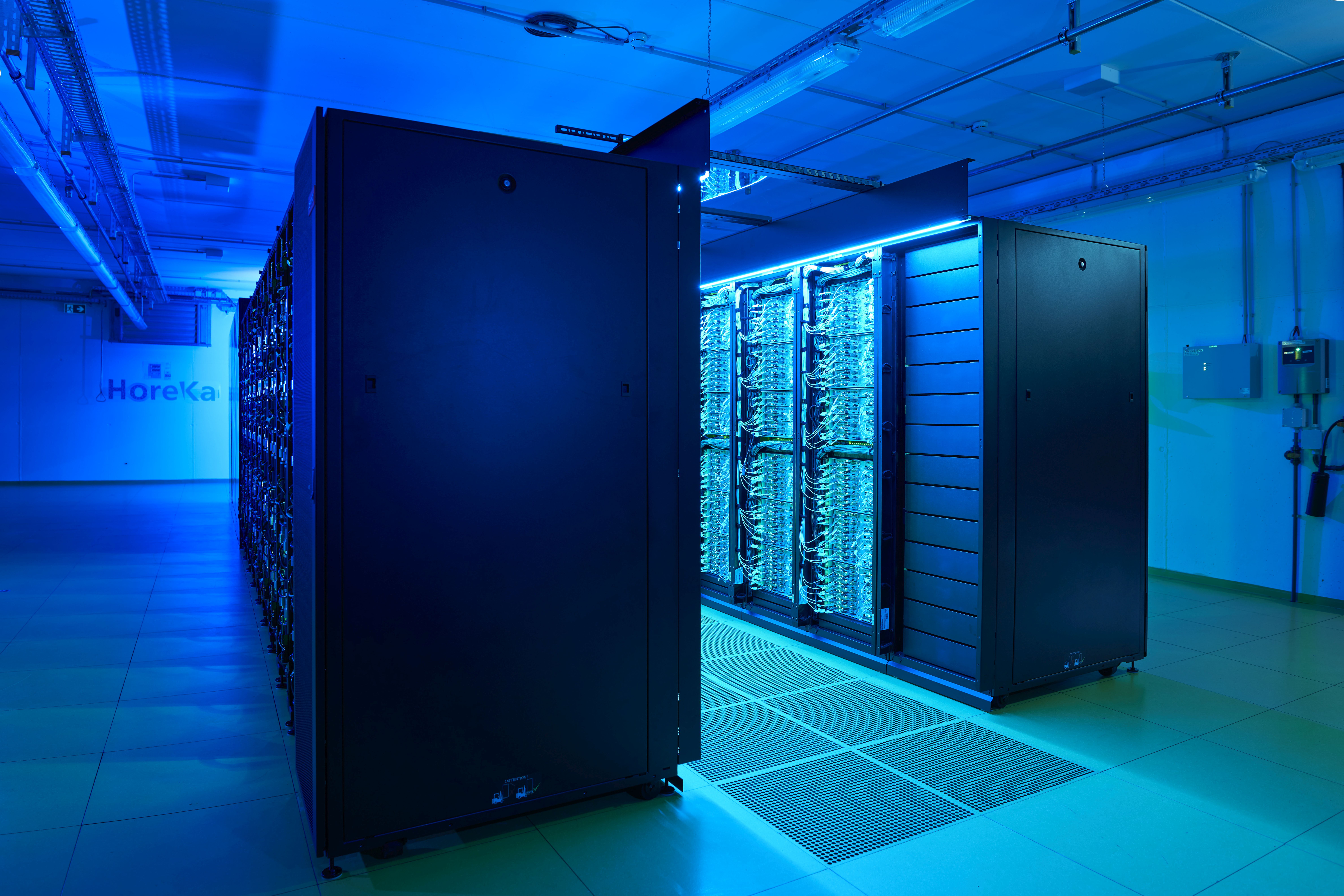40 Years of Supercomputing in Karlsruhe

"Cyber 205" was the name of the first supercomputer acquired by the then University of Karlsruhe in 1983. It had a computing power of up to 800 MegaFLOPS. By comparison, the performance of today's average PC is already measured in GigaFLOPS, i.e. a thousand times more. The current "Karlsruhe High Performance Computer" (HoreKa) of the Karlsruhe Institute of Technology (KIT) brings it to 17 PetaFLOPS, which is equivalent to the performance of more than 150,000 laptops or about 21 million Cyber 205 systems. On Thursday, September 14, 2023, KIT will celebrate 40 years of high-performance computing in Karlsruhe.
When it was commissioned in mid-2021, HoreKa, KIT's current supercomputer, was among the 15 most powerful computers in Europe and ranked 52nd on the list of the 500 fastest computers in the world (TOP500). In terms of energy efficiency, it even ranked 13th in the international supercomputer ranking (Green500). "Today, researchers use high-performance computers as a matter of course to gain a more detailed understanding of highly complex natural and technical processes," says Professor Martin Frank, Director of KIT's Steinbuch Centre for Computing (SCC), "for example in materials sciences, earth system sciences, energy and mobility research, engineering, life sciences, and particle and astroparticle physics."
More than 30 supercomputers already operated at KIT
The importance of the Karlsruhe site for academic supercomputing is based on a steady development: since 1983, KIT and its predecessor organizations, the University of Karlsruhe and the Karlsruhe Research Center, have operated more than 30 high-performance computers. Already in the 1960s, computing centers had been established there, whose computers were available to researchers and students.
The powerful mainframe and general-purpose computers were repeatedly replaced by more up-to-date, more powerful models. Finally, in 1983, the first supercomputer was installed at the computing center of the University of Karlsruhe - a computer of the type Control Data Cyber 205. Because even this was quickly used to capacity and the demand for computing power was constantly increasing, new high-performance computers were regularly procured. The Cyber 205 was initially followed by various other computers of the VP and VPP series. "A milestone was the S600/20 computer, which took the top position in Germany in the first TOP500 edition in 1993," Frank reports.
As "The Research University in the Helmholtz Association," KIT creates and imparts knowledge for society and the environment. Its goal is to make significant contributions to global challenges in the fields of energy, mobility, and information. To this end, about 9,800 employees cooperate on a broad disciplinary basis in natural sciences, engineering, economics, and humanities and social sciences. KIT prepares its 22,300 students for responsible tasks in society, industry, and science through research-oriented university studies. KIT's innovative activities bridge the gap between knowledge and application for the benefit of society, economic prosperity, and the preservation of our natural resources. KIT is one of the German universities of excellence.
